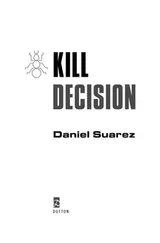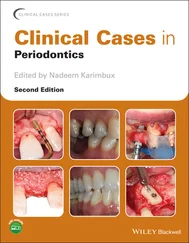36. Socransky SS, Haffajee AD, Cugini MA, Smith C, Kent RL, Jr. Microbial complexes in subgingival plaque. J Clin Periodontol 1998;25:134–144.
37. The American Academy of Periodontology. Proceedings of the World Workshop in Clinical Periodontics. Chicago: The American Academy of Periodontology 1989:I/23–I/24.
38. Caton JG, Armitage G, Berglundh T, et al. A new classification scheme for periodontal and peri-implant diseases and conditions: Introduction and key changes from the 1999 classification. J Periodontol 2018;89(suppl 1):S1–S8.
39. Armitage GC. Development of a classification system for periodontal diseases and conditions. Ann Periodontol 1999;4:1–6.
40. Tonetti MS, Greenwell H, Kornman KS. Staging and grading of periodontitis: Framework and proposal of a new classification and case definition. J Periodontol 2018;89(suppl 1):S159–S172.
3
GINGIVITIS AND PERIODONTITIS
Carlos Parra Carrasquer, DDS
Fernando Suárez López del Amo, DDS, MS
DEFINITIONS AND TERMINOLOGY
Aggressive periodontitis: A diverse group of highly destructive forms of periodontitis affecting primarily young individuals, including conditions formerly classified as “early-onset periodontitis” and “rapidly progressing periodontitis.” 1
Chronic periodontitis: Forms of destructive periodontal disease that are generally characterized by slow progression. 1
Epidemiology: The study of the distribution of disease or a physiologic condition in human populations and of the factors that influence this distribution. 2
Gingivitis: Site-specific inflammatory condition initiated by dental biofilm accumulation and characterized by gingival redness and edema and the absence of periodontal attachment loss. 3
Incidence: The frequency in which some event, such as a disease or trait, appears in a particular population or area.
Necrotizing ulcerative gingivitis: An infection characterized by gingival necrosis presenting as “punched out” papillae, with gingival bleeding and pain. Halitosis and pseudomembrane formation may be secondary diagnostic features. Fusiform bacteria, Prevotella intermedia , and spirochetes have been associated with the lesion. Predisposing factors may include stress, poor diet, smoking, and HIV infection. 4
Necrotizing ulcerative periodontitis: An infection characterized by necrosis of gingival tissues, periodontal ligament, and alveolar bone. These lesions are most commonly observed in individuals with systemic conditions, including but not limited to HIV infection, malnutrition, and immunosuppression. 4
Periodontal health: State free of inflammatory periodontal disease. 5
Periodontitis: Chronic multifactorial inflammatory disease associated with dysbiotic plaque biofilms and characterized by progressive destruction of the tooth-supporting apparatus. 1
Prevalence: The proportion of a population that has a specific characteristic at a given time.
Periodontal diseases are the result of a complex interaction between bacterial plaque, the host’s immune response, and modifying factors that may impact the course of the disease. Periodontitis in particular represents a chronic inflammatory disease typically resulting in the apical migration of the junctional epithelium along with destruction of connective tissue attachment and alveolar bone. While microbial plaque and its byproducts are the main etiologic factors initiating the disease, it is the host’s response to bacterial challenge that accounts for most of the periodontal destruction. Modifying factors such as diabetes, smoking, obesity, and genetic predisposition, among others, may exacerbate the progression of periodontal disease. Also, many of the features of periodontal disease are derived from the unique anatomy of the periodontium, in which a hard nonshedding structure (ie, a tooth) is partially embedded within the maxillary and mandibular processes.
This chapter focuses on the epidemiology, etiology, and pathogenesis, as well as the characteristics of the different forms of periodontal disease. It is important to mention that, while acknowledging the latest classification in periodontal diseases and conditions from the 2017 World Workshop (see chapter 2), several terms pertinent to previous classifications, including chronic periodontitisand aggressive periodontitis, have been used for clarification purposes.
Epidemiologic studies must be conducted in humans, comprising a control or comparison group, and should consider all clinically relevant endpoints. These studies must provide data on the prevalenceof periodontal diseases in different populations, as well as the severity of the cases. Additionally, the studies should clarify aspects of the etiology and risk factors and should provide information regarding the effectiveness of preventive and therapeutic measures on the population. Information on epidemiologic studies is gathered by clinical and radiographic assessment of the periodontal status. On the other hand, an index is a numeric value that is often used to describe the relative status of the population on a scale with definite upper and lower limits. 6Since the 1950s, different clinical, laboratory, and radiologic recording systems and indices have been used to measure the prevalence, extent, and severity of periodontal diseases at individual and population levels. Indices require validity, reliability, clarity, simplicity, objectivity, quantifiability, sensitivity, and acceptability by both the examiner and the subject. 7–9Some of the most commonly used in periodontology indices are shown in Box 3-1. 10–17
BOX 3-1 Commonly employed indices in periodontics 10–17
| Assessment of periodontal inflammationGingival Index 10Gingival Bleeding Index 11 Assessment of plaquePlaque Index 12Hygiene Analysis Index 13 Assessment of loss of periodontal supportRussell’s Periodontal Index 14Periodontal Disease Index 15 Radiographic assessment of radiographic bone lossSchei’s ruler 16Percent of bone loss Assessment of periodontal treatment needsCommunity Periodontal Index of Treatment Needs 17 |
One of the major challenges in assessing the prevalence of periodontal diseases relies on the great heterogeneity of indices used, the variations within population, the measurement errors, and the subjectivity of the examiners. However, recent epidemiologic studies have attempted to identify and overcome these issues.
Between 2009 and 2014, the National Health and Nutrition Examination Survey (NHANES) conducted a survey on the prevalence of periodontitis among adults in the United States. 18The findings were as follows:
42.2% of adults 30 years or older have periodontitis7.8% have severe periodontitis34.4% have mild or moderate periodontitis
59.8% of adults 65 years or older have periodontitis
It is estimated that more than 82% of adolescents in the United States have signs of gingival bleeding and therefore gingivitis. 19Additionally, more than 75% of the adults in the United States have signs of gingivitis. 20Consequently, gingivitis is prevalent at all ages and is considered the most common form of periodontal disease. 21–23
It is estimated that the prevalence of aggressive periodontitis among US schoolchildren is around 0.4% for 13- to 15-year-olds and 0.8% for 16- to 19-year-olds. 24Löe and Brown 25in 1991 as well as Albandar et al 24in 1997 found that the prevalence of aggressive periodontitis is highest among African Americans (2.64% and 2.6%), followed by Hispanic Americans (1.08% and 0.5%), whereas White Americans had the lowest prevalence (0.17% and 0.06%). In most populations, the prevalence of aggressive periodontitis is similar in males and females. 26
Читать дальше












